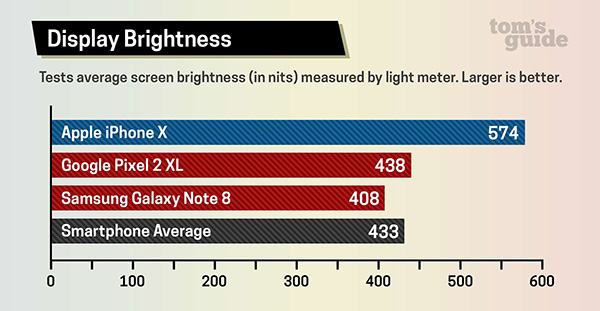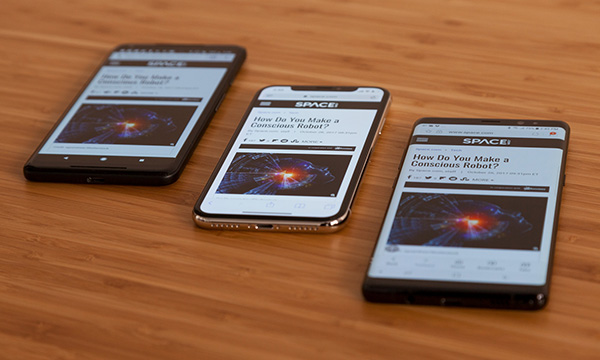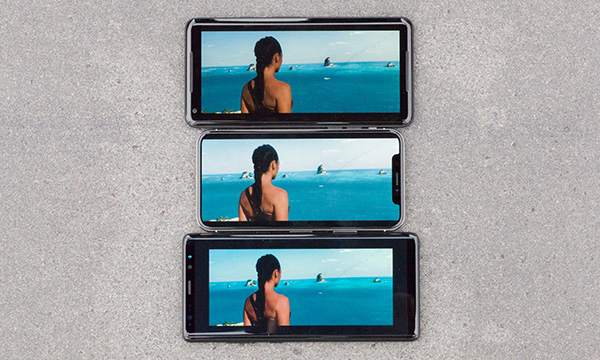When talking of innovation in the world of consumer technology, Apple’s name is bound to come up sooner or later, though, of late, more for implementation than for entirely new ideas, per se. The past few years, the Cupertino giant’s modus operandi seems to shifted from leading the evolution of industry design standards to creating better formulae for existing standards.
A good example of this would be the recent evolution of the iPhone’s display. While neither the OLED panel on the iPhone X nor its edge-to-edge design is an industry-first, a new report by Tom’s Guide posits that the smartphone’s display, while less sharper than much of the competition, is brighter and offers better viewing angles.
![]()
The report compares the iPhone X display with that of Samsung’s Galaxy Note 8 and the pOLED panel of Google’s Pixel 2 XL, crowning Apple’s offering as the clear winner when it comes to brightness. The iPhone X OLED panel’s brightness measured in at an average of 574 nits, leaving the Pixel 2 XL far behind at 438 nits and the Note 8, at 408 nits.
A comparison between white balance and color accuracy saw the iPhone X display fare slightly better than the competition with a Delta-E score of 0.21 with True Tone enabled, with the Pixel 2 XL securing second place with a 0.26 and the Note 8 coming last with 0.5.

The iPhone X panel also seems to hold up quite well when viewed at an angle. While it still takes on that blue tint inherent to OLED displays at sharper viewing angles, the shift in hue is much less apparent than it is on the two competing displays, with the blue shift on the Pixel 2 XL display being the worst of the lot.

The report also compares saturation, claiming that the iPhone X strikes the perfect balance between stronger colors and realistic shades, though whether or not that qualifies as a win is debatable, as some users may prefer the more saturated colors of the Note 8 panel. The Pixel 2 XL does, however, go a little overboard in its quest to compensate for the saturated palette that is part and parcel of OLED technology.

While differences between Google’s LG-manufactured panel and Apple’s offering are understandable, it’s rather ironic how the iPhone X display, which is supplied by Samsung but heavily modified and optimized for accuracy by Apple, edges past the latter’s own Note 8 panel, if only in certain aspects.
(Source: Tom’s Guide)
You may also like to check out:
- How To Take Screenshots On iPhone X With No Home Button
- DFU Mode On iPhone X / 8: Here’s How To Enter It
- Recovery Mode On iPhone X / 8: Here’s How To Enter It
- Check iPhone X Battery Percentage In Status Bar, Here’s How
- Download iOS 11.1 IPSW Links And OTA Update Of Final Version
- Downgrade iOS 11 / 11.1 On iPhone Or iPad [How-To Guide]
- Download iOS 11, 11.1, 11.0.3 Links & Install On iPhone X, 8, 7 Plus, 6s, 6, SE, iPad, iPod [Tutorial]
- Jailbreak iOS 11 / 11.1 / 11.0.3 On iPhone And iPad [Status Update]
You can follow us on Twitter, add us to your circle on Google+ or like our Facebook page to keep yourself updated on all the latest from Microsoft, Google, Apple and the Web.

